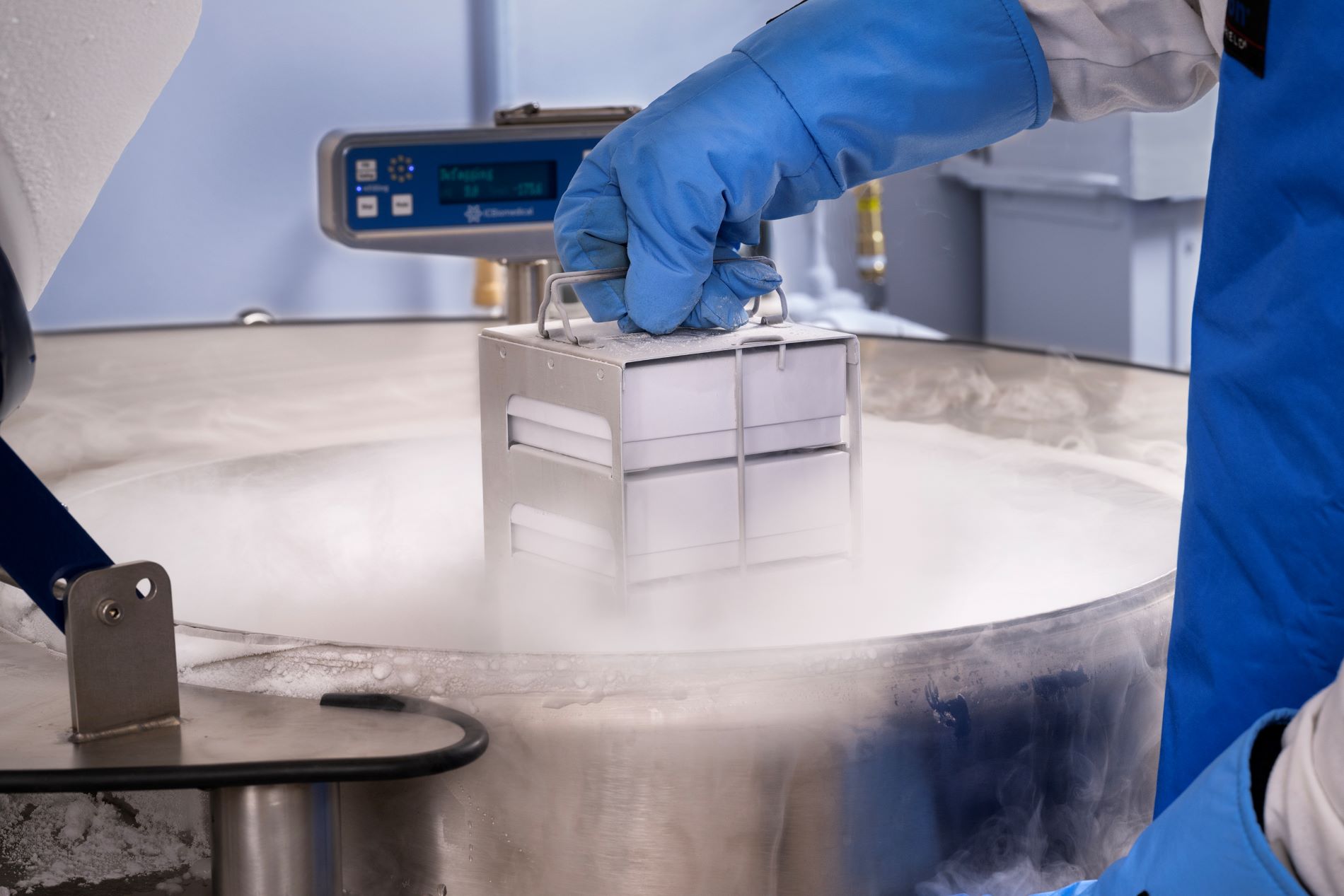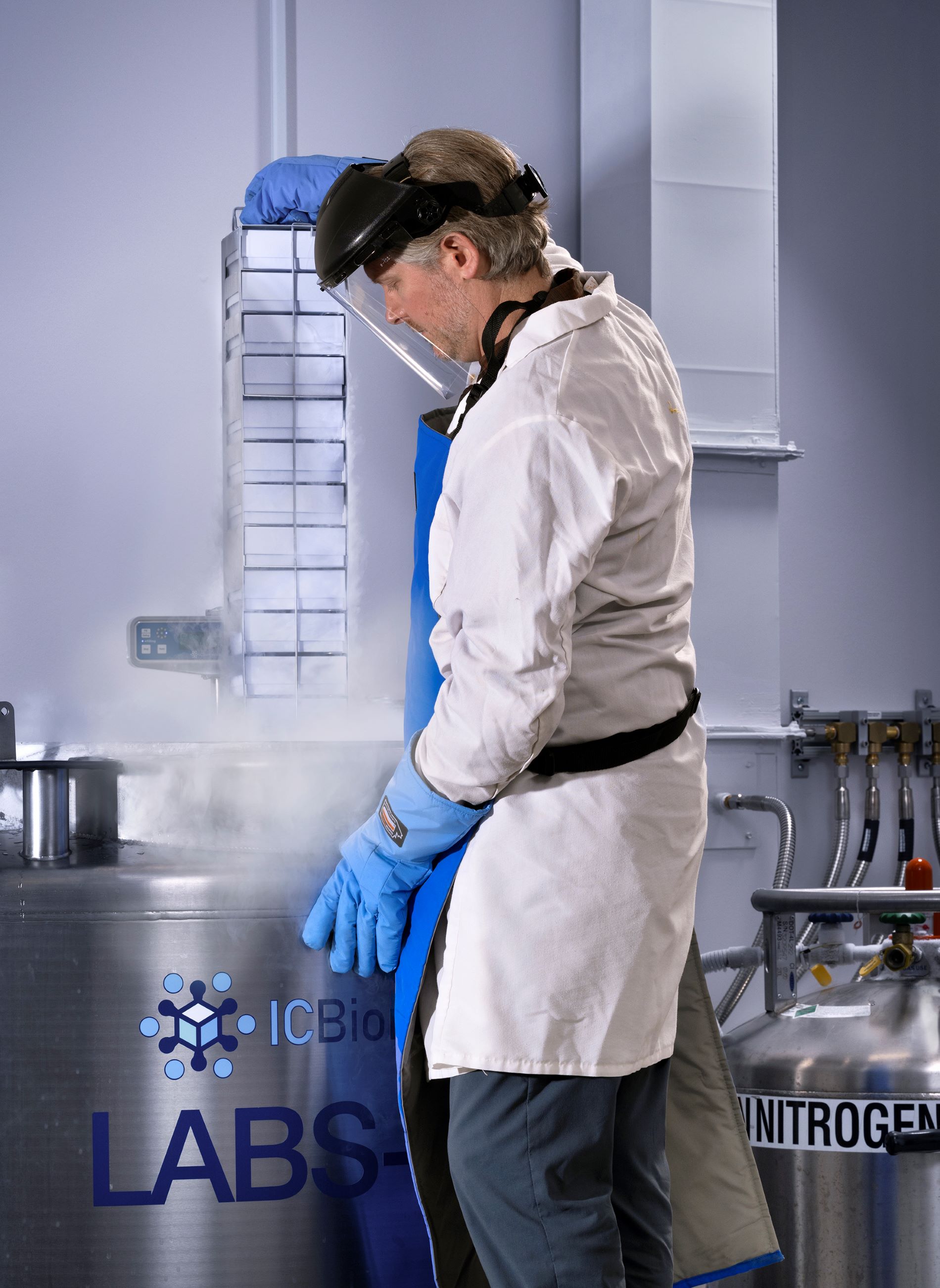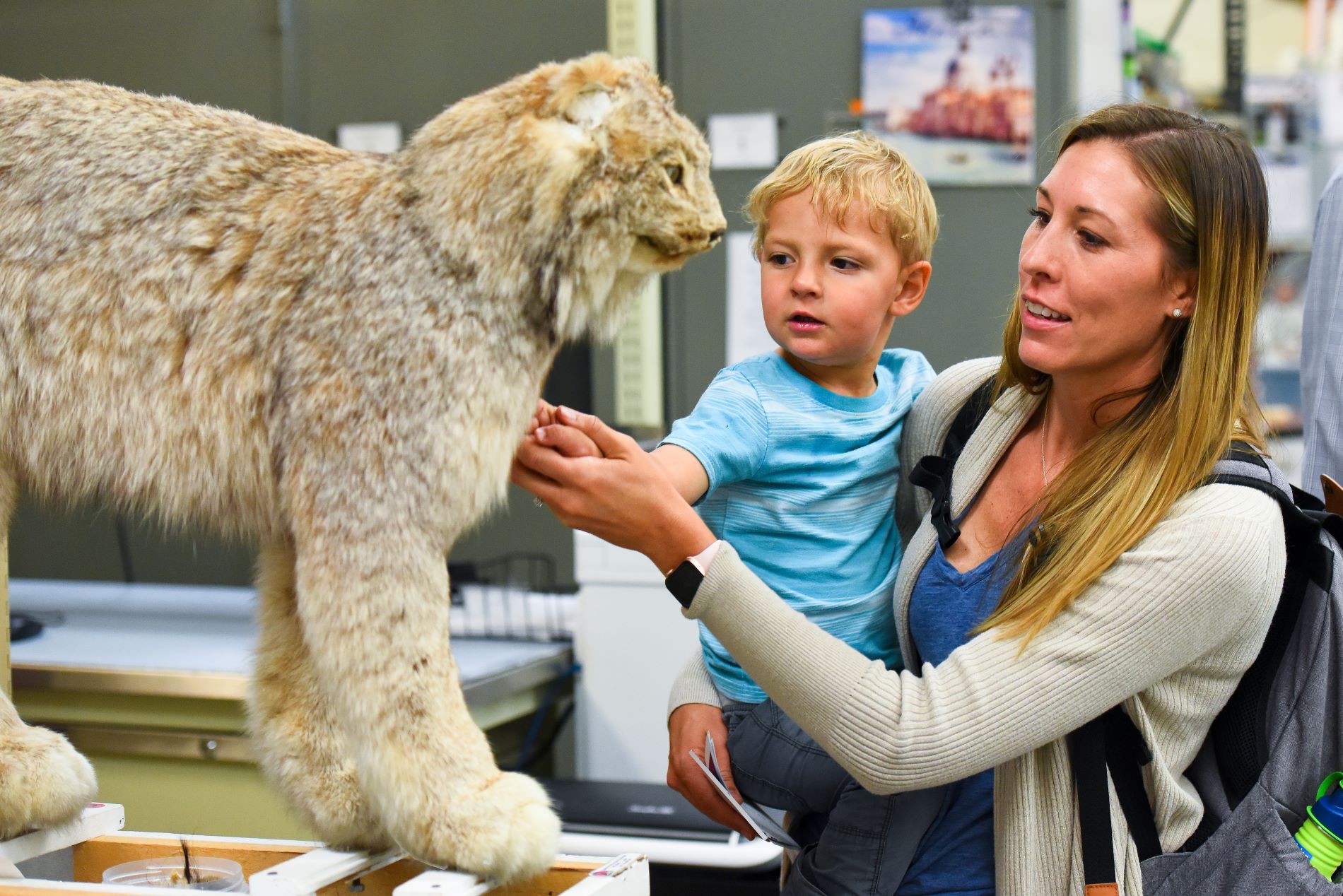General public guests are strongly encouraged to purchase advance tickets. Reserve Tickets
Members receive free admission to the Museum 364 days a year! Become a Member
Take your Museum journey home with you. Visit the Museum Shop
And With It, A Deepening Understanding of Nature and Science

With a boiling point of negative 196 degrees Celsius, liquid nitrogen is over 100 degrees colder than the coldest temperature ever recorded on Earth. To find the closest natural occurrence of temperatures this cold, one would have to travel to the polar region of Callisto, one of Jupiter’s icy moons. And yet these extreme temperatures are now kept indefinitely inside the two enormous and powerfully insulated vaults in the new cryolab, which was completed and launched at the Denver Museum of Nature & Science earlier this year.
The temperature of the vaults is so cold that it preserves tissue in a perfect state of suspended animation. Even after many years of storage, samples emerge in precisely the same condition in which they were deposited. Why does this matter? This state-of-the-art addition to the Museum’s collections area will allow scientists to analyze the samples and collect information that can be used for research on everything from new medicines to food production and preserving the world’s biodiversity.

Zoology collections manager Andrew Doll wearing protective gear as he lifts a rack of specimens from the ultra-cold vault (Photo/ Rick Wicker)
The groundbreaking new facility adds exciting new capabilities for research happening here at the Museum. Dedicated to preserving animal specimens for decades – and possibly even centuries – the cryolab will harness cutting-edge technology to safeguard genetic information for generations to come.
“[The cryolab] allows us to store biological material at a temperature that essentially makes it an inert substance, so the biomolecules stored in the nitrogen freezers will not degrade,” said Dr. Garth Spellman, director of zoology at the Denver Museum of Nature & Science. “The new facility aligns us with best practices for storing animal tissues and cells… enabling cutting-edge research in genomics, zoonotic disease, environmental contaminants and more.”

The Denver Museum of Nature & Science’s north side entrance at sunrise. (Photo/ Rick Wicker)
Coinciding with the opening of the facility, the Museum began its search to fill a newly created genomics scientist position, which will oversee the genetics lab, use the Museum’s growing frozen tissue collection and further the Museum’s contribution to the burgeoning field of genomics, the study of an organism’s entire genome and the interactions among specific genes.

Cryo-preserved samples contributed to a recent study that revealed how rosy finches’ genes influence their plumage and their ability to adapt to high elevations. (Photo/ Joel Such)
The information contained within genes is particularly powerful when paired with actual tissue samples stored in the cryolab. This is because scientists can study the interplay between genotype – the information coded within genes – and phenotype – the physical expression of genes based on environmental factors.
Cryo-preserved samples collected by Spellman contributed to a recent study led by Dr. Erik Funk of the University of Colorado in Boulder, which revealed how the genes of rosy finches influence the color of the birds’ plumage and their ability to adapt to high elevations. This study can be used in conservation efforts and could help rosy finches survive threats posed by climate change.

The information stored in the cryolab contains virtually limitless possibilities. (Photo/ Chris Schneider)
As specimens are catalogued and stored, they will be uploaded to a searchable online database, Arctos, that will allow people from around the world to download data and request loans. Theoretically, future researchers may wish to compare today’s samples with those collected during their own time to better understand the process of evolution and the impacts of climate change on the world’s biodiversity.
“Anyone from an expert researcher in Uganda to a second grader down the street will be able to access the information,” said Andrew Doll, zoology collections manager at the Denver Museum of Nature & Science. “There might be new techniques that people are working on today that will be used on these tissues. Or it could be another 50 or 100 years before they develop some new, groundbreaking technology. There’s lots of hidden information contained in here.”
Considering the extraordinary number of species in existence and the incalculable combinations of base pairs of DNA contained within them, the amount of potential data far outstrips our current computing power. The information stored within tissue samples in the cryolab contains virtually limitless possibilities.
This browser is no longer supported.
We have detected you are using a less secure browser - Internet Explorer.
Please download or use Google Chrome, Firefox or if using Windows 10, you may also use Microsoft's Edge browser.